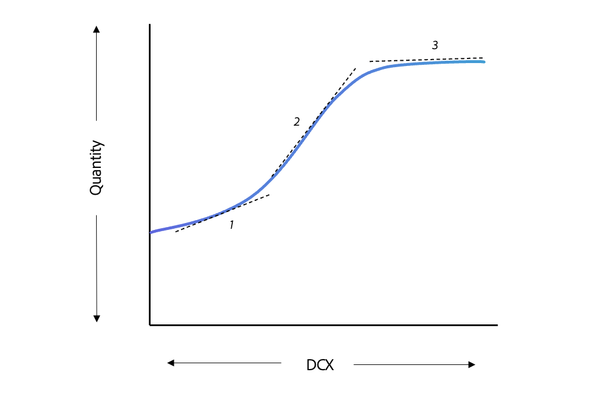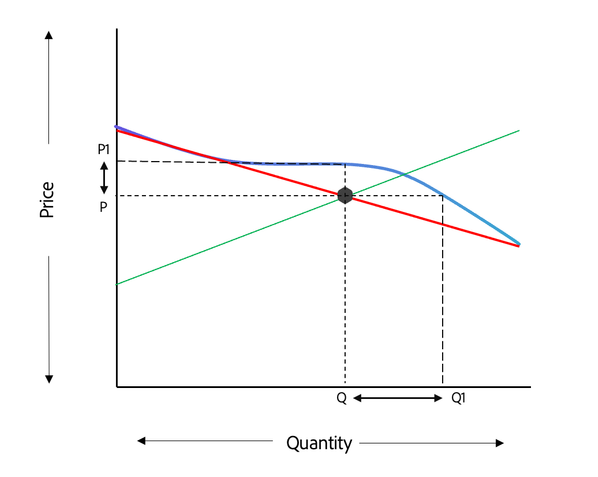Digital Customer Experience Elasticity - Conclusion
As I mentioned in the first article of this series, organizations suffer from a language problem when it comes to Customer Experience, a language barrier that stands those who make investments decisions. Customer Experience is a relatively new concept, in both theory and practice, which has gained larger attention in the recent past, particularly in the last three decades. Researchers and marketers describe it as a strategic process for creating holistic customer value, achieving differentiation and sustainable competitive advantage (Carbone and Haeckel, 1994; Pine and Gilmore, 1998; Shaw and Ivens, 2002; Gentile et al., 2007; Verhoef et al., 2009). In this conclusion, I won’t go deeper into the relevance and importance of Customer Experience for your organization. Different scholars, research agencies, independent firms have been reporting on the impact of Customer Experience on both customer value as well as business value.
Btw. In my next series I will discuss the phenomena of customer value and supplier value and the impact of digital experiential value on gaining competitive advantage. Stay tuned and subscribe to my newsletter to get notified when it will be published.
The language of Business Economics
What is the right level of investment of Digital Customer Experience in the context of your organization. My theory presented in the past three articles used geometric methods to explore the implications of Digital Customer Experiences linked with Business Economics. I used the principles of economic theory and introduced Digital Customer Experience elasticity of demand. See figure below.

Digital Customer Experience Elasticity of Demand
In the field of Digital and Customer Experience, we are often told that price is less important to some customers than experience and that customers may put up with more friction during their customer journey if they are invested in your brand. You could argue that the strength of your brand, and the degree to which customers will put up with a ‘bad’ experience will determine the elasticity. To illustrate the impact of Digital Customer Experiences using logical argumentation, I combined the DCX curve with economic theoretic models of supply and demand. The result is an uplift on price (when demand remains the same) which is shown in figure 2. This applies for both comfort/luxury (elastic) as well as necessity goods and services (inelastic). See article II for more details on this hypothesis

Impact of Digital Customer Experience on quantity and price - elastic demand curve
But what happens if demand is changes? Or in other words, when your organization is at growth, or in decline. Will there be a difference in terms of Digital Customer Experience value?
In article III of this series, I argued that Digital Customer Experiences will have impact when your organization is in change. The following illustration demonstrate the cushioning effect when an organization is at risk (declining demand). Digital Customer Experiences will positively impact the quantity demanded when price remains the same. See the difference between Q – Q1 and Q – Q2. Read more in article II how this works and the limitations of my hypothesis.
Impact of Digital Customer Experience when a sector is at risk
Conclusion
In three articles, I have been asserting different hypothesis based on logical argumentation using the introduction of Digital Customer Experience Elasticity and combining with Economic principles. Before concluding, I will first posit a definition of the concept I introduced in this series, namely Digital Customer Experience Elasticity
Digital Customer Experience Elasticity is the measurement of the degree of change in demand and/or price in response to a change in Digital Customer Experience
The following key concepts and assertions have been made over the past articles;
Rather, by accepting the trade-off model in Customer Experience, my purpose was to reason the logical consequences of a set of assumptions about Digital Customer Experiences. However, since my theory uses the method of logical argumentation and employing mathematical operators to deduce conclusions, the analysis presented here can only be “true” if the initial hypotheses of Digital Customer Experience as a sigmoid function (S-curve) is “true”. This is not to say that the analysis need be entirely valueless if the sigmoid are not “true”; analysis such as this can be illuminating, can throw up interesting questions and curious findings even if the function is a poor descriptor of reality. Rather than labouring that point at this stage, it is probably best to let you reach your own conclusion on that matter.
Lastly, the assertions are hypothesis and not based on empirical research. Research in a variety of settings would be very helpful to establish foundation for these assertions and what the range of Digital Customer Experiences is on Quantity demanded (and price). Maybe an adventure I might take with likeminded people. If you are interested, reach out to me.
References
Carbone, L. P., & Haeckel, S. H. (1994). Engineering customer experiences. Marketing management, 3(3), 8-19.
Gentile, C., Spiller, N., & Noci, G. (2007). How to sustain the customer experience:: An overview of experience components that co-create value with the customer. European management journal, 25(5), 395-410.
Pine, B. J., & Gilmore, J. H. (1998). Welcome to the experience economy (Vol. 76, No. 4, pp. 97-105). Harvard Business Review Press.
Shaw, C., & Ivens, J. (2002). Building great customer experiences (Vol. 241). London: Palgrave.
Verhoef, P. C., Lemon, K. N., Parasuraman, A., Roggeveen, A., Tsiros, M., & Schlesinger, L. A. (2009). Customer experience creation: Determinants, dynamics and management strategies. Journal of retailing, 85(1), 31-41.